Hospital Watch
Q1 FY24 performance review – Hospitals and diagnostic centers

While challenges abound, the hospital and diagnostic sector, on the back of good financial results in Q1 FY24, is in an expansion mode. A detailed review.
The hospitals and diagnostic centers have seen a steady start in Q1 FY24. The post-Covid anticipated slowdown did not occur, nor is there any pent-up demand of elective procedures as in the previous quarters.
Q1 FY24 saw most specialties remain in the same ratios, as they were before the pandemic. For a couple of companies, it was the first year, when Q1 was almost equal to Q4 as far as overall EBITDA is concerned. For some, unseasonal rains played spoilsport as did the 7–8 percent hike in employee cost that was slightly on the higher side, when compared with the previous quarter because of the annual increment impact.
As the companies announced their quarterly results, some challenges were brought to the fore and interesting insights shared in the earnings calls by the senior management with their respective shareholders.
Emerging trends and dynamics in the Indian in vitro diagnostics industry
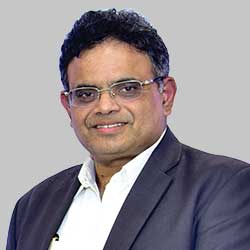 Thomas John
Thomas John
Managing Director,
Agappe Diagnostics Ltd
The Indian in vitro diagnostics (IVD) industry has been experiencing a transformative journey, driven by technological advancements, regulatory reforms, and the growing demand for accurate and timely diagnostic solutions. In recent years, the industry has witnessed significant growth, playing a pivotal role in enhancing healthcare outcomes, for effective patient management and treatment decisions.
Increasing awareness about preventive healthcare, a rise in chronic diseases, and the government’s focus on improving healthcare infrastructure are the major focus areas now. Infectious diseases, cases of oncology, cardiology are on the increase. Technologies like molecular diagnostics, point-of-care (POC) testing, and lab automation make a shift toward personalized and efficient diagnostic solutions, enabling faster and more accurate diagnostics.
The shift toward preventive healthcare in India has boosted the demand for diagnostic tests, detecting diseases at their earliest stages, facilitating timely intervention and reducing healthcare costs in the long run.
The POC testing has emerged as a game-changer in the Indian healthcare, conducting diagnostic tests at the patient’s bedside, clinic, or any remote location, thereby reducing the turnaround time for test results. Genetic testing and molecular diagnostics are enabling healthcare professionals to tailor treatment plans based on individual patient profiles and personalized medications.
The Indian government’s focus on healthcare infrastructure and quality standards is reshaping the IVD industry. Stricter regulatory guidelines and emphasis on quality assurance ensure safety and accuracy of tests, reinforcing the trust in the system.
The integration of data analytics and digital health solutions and application of artificial intelligence and machine learning enable precise diagnoses and treatment recommendations, facilitating remote monitoring and telemedicine services.
Amidst this dynamic landscape, Agappe Diagnostics shines as an example of innovation, affordability, and quality. By introducing groundbreaking diagnostic solutions, ensuring accessibility through affordability, and upholding robust quality standards, Agappe continues to shape the future of diagnostics in India. As the industry forges ahead, Agappe’s contributions will undoubtedly play a pivotal role in elevating healthcare outcomes and enhancing the overall wellbeing of the Indian population. By nurturing partnerships with healthcare providers, researchers, and institutions, Agappe strives to drive meaningful advancements that positively impact patient care and healthcare infrastructure.
Challenges
“There are a lot of challenges; the biggest one in India being non-availability of manpower, and making the numbers work. As organizing a lot of facilities, you start to grow, then you have to comply with all kinds of regulatory norms, you have to start declaring the income, which a lot of single clinics do not necessarily have to do because the practice of an individual and the practice of a clinic is indistinguishable. So these things start to come in, and there is a cost, and those overheads that you have to bear with, which the patient won’t always pay. But over time, with growing insurance penetration with all these things starting to come in, we see a huge scope for expansion for all players across the country.”
“What’s happening right now is that the cost of construction is extremely high, the cost of setting up a new bed is very high, salary cost is extremely high.”
“In India, the demand is pretty uniform wherever you go; small town, big town does not matter. There are still people needing heart surgery, onco surgery but the ability to cater to that demand at the current set of price points, unfortunately, is best met in Tier-I towns. So, you have to build a very different kind of hospital and you have to still use the same equipment, still have to hire the same doctors, still pay the same salary, still use the same construction cost but you have to be able to breakeven at a much lower realization. So, for that, all the companies that are trying to expand have to be very careful about what their return on capital looks like, how much they’re spending, and whether there’s enough of a market that can cater to at that price point.”
Unveiling the future – Exploring the latest MedTech marvels reshaping India’s healthcare landscape
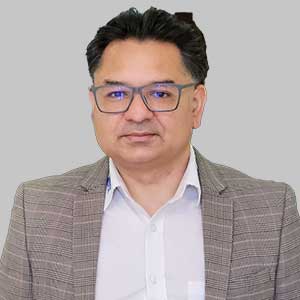 Aditya Kohli
Aditya Kohli
CFO & Director – Sales,
Allied Medical Limited
The Indian critical care medical technology (MedTech) industry is currently witnessing a surge in demand, driven by factors, such as increasing prevalence of chronic diseases, rising disposable incomes, and improving healthcare infrastructure. According to a report by Market Research Future, the Indian critical care MedTech market is expected to grow at a CAGR of 12.5 percent during the forecast period 2022–2028.
The growth of the critical care MedTech market in India is being driven by several factors, including the increasing prevalence of chronic diseases – India is home to a large and growing population of people with chronic diseases, such as heart disease, stroke, diabetes, and cancer. These diseases often require critical care support, which is driving demand for critical care medical devices and equipment.
Rising disposable incomes. India’s middle class is growing rapidly, and disposable incomes are increasing. This is leading to increased spending on healthcare, including critical care services.
Improving healthcare infrastructure. The Indian government is investing heavily in improving healthcare infrastructure, including critical care facilities. This is creating new opportunities for the critical care MedTech industry.
India has been a popular destination for medical tourism due to its cost-effective healthcare services and skilled medical professionals. This trend was expected to continue, with the country attracting patients from around the world. India has been making efforts to boost domestic medical devices manufacturing to reduce its dependence on imports. The government has launched initiatives like Make in India to promote local production of medical equipment and devices. The Indian critical care MedTech market is a rapidly growing market with several opportunities for both domestic and international players. The key players in the market are focusing on developing innovative products and services to meet the growing demand for critical care services in India.
It is important to verify the current status of these trends and any new developments in the Indian MedTech industry, as the landscape can change rapidly. Consulting industry reports, news sources, and government announcements can provide more up-to-date information on the state of the MedTech sector in India in 2023 and beyond.
“Nursing is a challenge for the entire industry, and this challenge will remain for some time. Initially, the challenge was on the clinicians as well, but that part is being addressed quite a bit by the number of seats, which have been increased in the last 10 years. But on the nursing side, lot of effort is still required.”
Trends
“There is seasonality with specialty mix that plays out in different quarters and that impacts revenue on a quarter-on-quarter (QoQ), year-on-year (YoY) basis. Orthopedics happen less in winter, cardiac sciences happen more in winter. More insured patients come in for annual checkups in Q4, because it is lapsing. For any hospital or hospital chain over the last 10 years, Q4 is the strongest, while Q1 is the weakest as far as occupancy is concerned, partly as doctors are on leave, and surgeries are postponed. Patients postpone their own procedures too because it’s examination time for children. Occupancy is the highest, and ARPOB low in Q2, because of dengue and more internal medicine admissions, etc.”
Indian MedTech industry
 Amrith Rangan
Amrith Rangan
CMO,
AKAS Medical Equipment
The Indian MedTech industry has been on an exciting and transformative journey in recent years. Fueled by advances in technology, changing healthcare needs, and a growing middle-class population, this sector has witnessed significant growth and innovation. In this article, we will delve into the current state of the Indian MedTech industry.
Indian MedTech Industry has been promoting domestic manufacturing of medical devices through initiatives like Make in India. These help to make the medical technology more affordable and accessible. It is also targeting international market to export medical devices, which are manufactured in India.
The regulatory framework, Medical Devices Rules 2017, has brought more structured for the registration and approval of medical devices. These regulations aimed to streamline the approval process, enhance the safety and quality standards.
Indian MedTech sector is mainly looking for improving healthcare delivery, patient outcomes, and the overall healthcare infrastructure in India. It encompasses the design, development, manufacturing, and distribution of medical devices, equipment, and technologies used in healthcare.
Technology advancement is playing a pivotal role in enhancing healthcare access and delivery. Innovations in areas, such as diagnostic imaging, telemedicine, wearable devices, artificial intelligence (AI), and robotics have had a profound impact in healthcare delivery.
In healthcare sector, infusion pump is a vital device and it has undergone a significant transformation. To enhance the device functionality, the infusion pump is integrated with electronic health records (EHR) and remote monitoring system that allows healthcare providers to manage patient care more efficiently, and for safety performance.
Nowadays, smart infusion pumps are equipped with safety features, such as dose error reductions system (DERS) and wireless connectivity. These help to reduce the medication error and improve patient safety.
Nowadays, infusion pumps are customized as per the settings required by the healthcare providers or hospitals.
The Indian MedTech industry is poised for growth and innovation despite the challenges. With a commitment to technology integration, customization for needs, healthcare sector is becoming more advanced and safer, with improved access to quality healthcare service in India. The Indian MedTech sector plays a vital role in shaping the future of healthcare.
“International patients come for more severe diseases to India, and so the billing is higher. ARPOB for the patient is higher. The percentage revenue is lower, but the absolute EBITDA per bed is higher. Surgeons would rather do a USD 10,000-surgery with a 20-percent margin than do a USD 2000-surgery with a 50-percent margin. As you move up the payer mix and you move up the clinical mix, you see margins, in percentage terms come down but in absolute terms ARPOB as well as absolute EBITDA per bed move up.”
“Any high-end procedure has lower-percentage margin and high-value margin. Oncology, orthopedics, and cardiac sciences have lower percentage margins, but higher ARPOBs, higher billing, higher EBITDA per patient, and higher EBITDA per bed.”
Performance Review Q1 FY24
Narayana Hrudayalaya Limited
The financial highlights of consolidated financial results announced by Narayana Hrudayalaya Ltd., for Q1 FY24 reveal:
- Consolidated total operating income was ₹1233.4 crore for Q1 FY24 as compared to ₹1033.4 crore in the corresponding period of the previous year, reflecting an increase of 19.4 percent YoY and 1.0 percent QoQ;
- Consolidated EBITDA stood at ₹285.8 crore, reflecting a margin of 23.2 percent as against ₹200 crore in Q1 FY23, translating into YoY growth of 42.9 percent and decrease of 1.6 percent QoQ;
- Consolidated PAT stood at ₹184 crore, reflecting a margin of 14.92 percent as compared to ₹1106 mn in Q1 FY23, translating into YoY growth of 66.4 percent and QoQ growth of 6.2 percent respectively;
- India operating income was ₹989.7 crore for Q1 FY24 as compared to ₹865.4 crore in the corresponding period of the previous year, reflecting an increase of 14.36 percent YoY and 0.6 percent QoQ; and
- HCCI operating income was ₹255.1 crore for Q1 FY24 as compared to ₹175.5 crore in the corresponding period of the previous year, reflecting an increase of 45.4 percent YoY and 4.3 percent QoQ.
|
Narayana Hrudayalaya Ltd |
|||
| ₹ crore | Q1 FY24 | Q1 FY23 | Q4 FY23 |
| Consolidated revenue |
1,233.43 | 1,033.40 | 1,221.59 |
| PAT | 184.05 | 110.62 | 173.24 |
| EBITDA | 285.77 | 200.00 | 290.42 |
| EPS (₹) | 9.06 | 5.45 | 8.53 |
Expansion plans. There is no large hospital coming up in the next couple of years in India. Certain smaller projects are happening in Ahmedabad, in Howrah Hospital, and realignment in Bangalore and Kolkata. The plan is to add smaller OPD-based clinics, medium-sized clinics and polyclinics that cater to a range of requirements all over Bengaluru, their current selected city for expansion, and the complicated cases are referred to its major hospitals. Overseas, the company is planning expansion on the core market of Bangladesh.
Within India, in the next three to three-and-a-half years the focus is not on expanding bed capacity but on sweating existing assets. There is enough demand, a long waitlist for people who want surgery, and not enough beds and OTs to cater to them. The immediate expansion priority is the existing network. Once the opportunity set in the existing network is exhausted, the company will look at expanding in a little bit of a radius around those hospitals so that very strong overlapping capabilities where smaller hospitals in small towns refer to the larger hospitals in the same state are built.
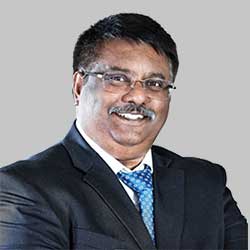 Emmanuel Rupert
Emmanuel Rupert
Managing Director & Group CEO,
Narayana Hrudayalaya Limited
The first quarter of the new fiscal year has started with a robust performance. We are pleased to report the highest-ever revenue on a quarterly basis, with profitability sustaining at high levels. The international patient mix remains flat, and payer mix and specialty mix is in line with the last quarter of the previous fiscal year. Our overseas business at Cayman continues to contribute to overall performance, achieving the highest-ever revenue and profitability on a quarterly basis, which is attributed to increased patient footfalls.
Our newly incorporated company Narayana Health Integrated Care (NHIC) has started on a positive note, and we are confident that it will have a significant impact on our overall business in future.
The much larger macro play, where there is demand all over India, is not being addressed at this point. That is explained thus. At the moment, the management finds that the cost of construction, of setting up a new bed, and salary cost extremely high. Since that cannot be changed, the noncore costs have to be lowered, efficiencies in the way the hospitals work further improved, waiting time patients have in the hospital and the number of people taking care of the nonmedical work reduced, and automation and digitization enhanced. And, in spite of almost similar demand and cost structure in Tier-I and Tier-II and Tier-III cities, the paying capacity is hugely different. It makes more sense for the company to expand in the larger cities.
Max Healthcare Institute Limited
The financial highlights of consolidated financial results announced by Max Healthcare Institute Limited for Q1 FY24 revealed:
- Gross revenue was ₹1719 crore compared to ₹1473 crore in Q1 FY23 and ₹1637 crore in Q4 FY23; reflecting a growth of 17 percent YoY and 5 percent QoQ. YoY growth of 17 percent is attributed to increase in ARPOB by 13 percent, OBDs by 3 percent and other operating income by 1 percent;
- Operating EBITDA for Q1 FY24 was ₹436 crore compared to ₹370 crore in Q1 FY23 and ₹437 crore in Q4 FY23, reflecting a growth of 18 percent YoY and flat QoQ. Q1 is traditionally a weak quarter compared to trailing quarter due to annual merit increase and lower occupancies owing to summer vacations;
- EBITDA margin for the quarter was 26.8 percent versus 26.5 percent in Q1 FY23 and 28.2 percent in Q4 FY23;
- EBITDA per bed (annualized) stood at ₹70.4 lakh, growth of 14 percent YoY and flat QoQ;
- PAT was ₹291 crore versus ₹229 crore in Q1 FY23 and ₹320 crore in Q4 FY23, growth of 27 percent YoY and (9 percent) QoQ; and
- Occupied bed days (OBDs) went up by 3 percent YoY and the average occupancy for the quarter stood at 74 percent; and ARPOB for the quarter touched a new high of ₹74,800, reflecting a growth of 13 percent YoY and 6 percent QoQ.
Max Healthcare is India’s second largest hospital chain in terms of revenue, EBITDA, and market capitalization.
|
Max Healthcare Institute Limited |
|||
| ₹ crore | Q1 FY24 | Q1 FY23 | Q4 FY23 |
| Gross revenue | 1,719.00 | 1,473.00 | 1,637.00 |
| PAT | 291.00 | 229.00 | 320.00 |
| EBITDA | 436.00 | 370.00 | 437.00 |
Expansion plans. In Q1 FY24, Max Healthcare added 44 beds through internal reconfiguration. This is in addition to the 92-bed oncology block commissioned at Shalimar Bagh in March this year.
During the months of June and July, there was a slowdown in the projects activity due to heavy rains in Mumbai, Punjab, and Delhi NCR. The current status of expansion projects coming on stream, over the next three years, is as follows:
- For 300 beds at Dwarka – The majority of the MEP and interior work are complete, while application for power, water, and sewage connections are in progress. The developer is expected to apply for occupancy certificate (OC) in the later half of this quarter. We expect to commission the hospital in Q3, subject to the developer obtaining the OC.
- For 329 beds at Nanavati Hospital in Phase I – excavation and raft work is nearly complete. Steel fabrication and wall casting for LINAC and Brachytherapy are in progress. The project is largely on time and we expect to cast the ground floor slab by the end of October.
- For 300 beds at Sector 56 Gurgaon in Phase I – 50 percent of site excavation is complete and the EPC contract is in the final stages of execution. All statutory approvals have been received.
- For 350 beds at Max Smart in Phase I – As stated during the Q4 update in May this year, this project was facing delays due to forest approval for tree transplantation. Happy to report that the final forest approval has now been received and we are initiating the process of transplanting the trees shortly after subsiding of rains.
- For 300 beds at Vikrant (Saket) – Environmental clearance has been approved and is under processing with the State-level Environment Impact Assessment Authority (SEIAA). DDA has reconstituted our file and we plan to formally upload the drawings for approval in September. So, this should be well on its way as well.
- For 190 beds at Mohali – Demolition of the existing building and shifting of services has been done. D-wall is completed and excavation work is underway. EPC contract is in the final stage of negotiations. The project is largely on time.
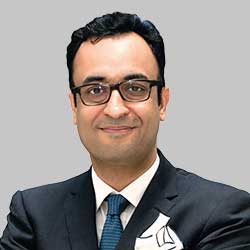 Abhay Soi
Abhay Soi
Chairman and Managing Director,
Max Healthcare Institute Limited
I am happy that despite the traditionally weak Q1, we could deliver our highest-ever quarterly revenue and improve profitability at bed level. While our installed capacity increased by 4 percent on YoY basis, we maintained our occupancy levels with higher occupied beds across the network. In the past year, we have significantly strengthened our projects and digital teams to reinforce our thrust in both these areas, which is intrinsic to our growth going forward. I am proud of the success and positive feedback received for our Max MyHealth app, which has now been fully rolled out.
The plan is, the company will have presence in any city, where at least one or two competitors have proven viability. Presently, it is meeting the existing business need and expansion is only being done in metros. Thereafter, it will move to other cities. The company has identified 21 cities, where at least one or two of its peers have proven viability.
The CapEx for FY24 is estimated at ₹900 crore.
Apollo Hospitals Enterprises Limited
The consolidated revenue from operations of Apollo Hospitals Enterprises grew by 16 percent YoY to ₹4418 crore in Q1 FY24 as opposed to ₹3796 crore recorded in Q1 FY23. Consolidated expenses of the healthcare provider went up 18 percent to ₹4182 crore (₹3545 crore) during this period.
|
Apollo Hospitals Enterprise Ltd. |
|||
| ₹ crore | Q1 FY24 | Q1 FY23 | Q4 FY23 |
| Total revenue | 4,417.80 | 3,795.60 | 4,302.20 |
| PAT | 173.40 | 323.78 | 145.64 |
| EBITDA | 509.00 | 490.70 | 504.50 |
| EPS (₹) | 11.59 | 22.05 | 10.05 |
It has posted a 47-percent YoY decline in its consolidated net profit for Q1 FY24 at ₹173 crore as compared to a net profit of ₹324 crore in Q1 FY23.
The net profit in the latest quarter was pulled down by a ₹97-crore combined loss posted by Apollo Healthco (digital health and pharmacy distribution vertical) and Apollo Health & Lifestyle Ltd. (diagnostics and retail health vertical) during the latest quarter. Healthcare service vertical (hospitals) reported a profit after tax of ₹264 crore in Q1 FY24.
 Suneeta Reddy
Suneeta Reddy
Managing Director,
Apollo Hospitals Enterprise Limited
This quarter has signaled that the investments in strategies adopted by us are gaining traction and are largely playing out to the plans that we had. We remain firmly committed to building the strongest integrated omni-channel healthcare network with the consumer at the center, ensuring access to high-quality healthcare across the value chain. We will do this while achieving a healthy EBITDA margin and strong ROCEs.
I would like to emphasize that everything that we do in Apollo Hospitals centers around the consumer and the patients. Our deep focus on clinical care as shown in our CONGO (cardiac, onco, neuro, nephro, gastro, and ortho) case mix; our technology absorption, the fact that we have now 25 robots that are being used, demonstrates that we are filling down the all-India network. And it also demonstrates that we have the ability to meet all challenges that may come in our way of future growth. So we are quite confident that this could be a very good year for us.
On a standalone basis, the company’s net profit was down by 36 cent to ₹214 crore (₹333 crore), while revenue from operations went up by 10 percent to ₹1688 crore (₹1530 crore).
Consolidated EBITDA was at ₹509 crore, registering an increase of 4 percent YoY. Within this, the healthcare services EBITDA grew by 12 percent, and healthcare margins were at 23.6 percent. Margins in mature hospitals were at 26.8 percent as against 26.4 percent in Q1 FY23. Margin at new hospitals was at 16.7 percent for the quarter as against 17.7 percent in Q1 FY23. The drop in margin was on account of a few factors like an increase in overall surgical discharges resulting in higher material consumption, increase in marketing expenditure for the new hospitals, and focused investment in clinical talent in these hospitals for future growth.
Apollo Health & Lifestyle had a new CEO Sriram Iyer join in. Iyer was previously chief revenue officer at Metropolis Healthcare Limited.
Expansion plans. Apollo Hospitals will add 2000 more beds by FY27, at a CapEx of ₹3000 crore by adding newer hospitals, close to 700 new beds every year after 2024. The first stock of beds are coming in the two regions Kolkata and Bangalore, followed by Gurgaon. The group continues to look at brownfields, and at acquisitions.
Diagnostics business added 260+ collection centers, taking the overall collection network to 1910+ centers spread across ~260 cities serving 13,000+ customers daily. The aim is to reach 3000+ collection centers by end of the year.
Apollo Cradle plans expansion in key markets across select metros to consolidate market share. One new center was launched in April 2023, 2–3 units will be commissioned by Q3 FY24.
The group plans to add about 500 to 600 digital health and pharmacy distribution outlets during the year.
Growth levers. The recruitment of new doctors is happening across the system. The second lever of growth will be Apollo 24/7, the company’s omnichannel business, which increases patient flow. The third lever will be leveraging Apollo Hospitals’ corporate relationships and international business.
Aster DM Healthcare Limited
In Q1 FY24, Aster DM Healthcare Limited’s revenues were up 21 percent YoY to ₹3215 crore and this was primarily driven by an increase in the number of beds through commissioning of new hospitals as well as an increase in the ARPOB.
The strong growth across both India and GCC and various cost improvement initiatives enabled even higher improvement in EBITDA performance, which recorded a robust growth of 33 percent to ₹388 crore from ₹292 crore in Q1 FY23.
|
Aster DM Healthcare Limited |
|||
| ₹ crore | Q1 FY24 | Q1 FY23 | Q4 FY23 |
| Total income | 3,215.37 | 2,662.12 | 3,262.32 |
| PAT | 19.85 | 79.77 | 182.59 |
| EBITDA | 388.00 | 292.00 | 506.00 |
| EPS (₹) | 0.10 | 1.38 | 3.43 |
Although the headline PAT performance appears weak, if the impact of new hospitals and non-recurring exceptional items is excluded, the profit after tax grew 87 percent to ₹84 crore in Q1 FY24, as against ₹45 crore in Q1 FY23.
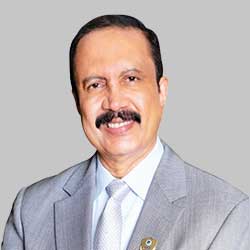 Azad Moopen
Azad Moopen
Founder Chairman and Managing Director,
Aster DM Healthcare
During Q1 FY24, we achieved an impressive 21-percent YoY consolidated revenue growth, totaling ₹3215 crore. Our performance during the quarter was shaped by not only the improvement in our realizations but also increase in the number of beds at the existing hospitals as well as at the new facilities to cater to growing demand. The strong growth across both India and GCC regions and various cost improvement initiatives enabled even higher improvement in our EBITDA performance, which recorded a robust growth of 33 percent to ₹388 crore.
Our India business continued to grow faster, witnessing a substantial increase of 29 percent in revenues reaching ₹838 crore and EBITDA increasing by 47 percent to ₹123 crore. While our project pipeline is advancing significantly, we are also building on our O&M Asset Light strategy that has potential to generate higher ROCE over a period. We are excited to announce our collaboration with PMF Hospital in Kollam, Kerala. With this, we have added a total of 530 beds under O&M Asset-Light model in less than 2 years, making it a significant milestone.
Overall, our Q1 performance reflects our adaptability, strategic expansion, and unwavering commitment to providing quality healthcare services amidst evolving market dynamics.
India revenues were up 29 percent to ₹838 crore and EBITDA grew 47 percent to ₹123 crore. Profit after tax for Aster India grew 115 percent to ₹41 crore as compared to ₹19 crore in Q1 FY23.
GCC revenues were up 18 percent to ₹2377 crore and EBITDA grew 27 percent to ₹265 crore. And the company has received permission to export the versatile India-manufactured SSI Mantra robot to UAE. This is the first export of this robot to a foreign country.
Key highlights for Q1 FY24
- Operational revenue grew 21 percent YoY to ₹3215 crore versus ₹2662 crore in Q1 FY23;
- EBITDA grew 33 percent YoY to ₹388 crore versus ₹292 crore in Q1 FY23;
- Reported net profit after taxes was at ₹5 crore compared to ₹69 crore in Q1 FY23; and
- Excluding new hospitals and non-recurring exceptional items, net profit after taxes grew 87 percent YoY to ₹84 crore.
Aster Lab India expects to breakeven by the end of next quarter, on a month-wise basis.
The group is planning to restructure its business; there will be two separate companies, the India company remaining public and the GCC becoming private.
Expansion plans. While Aster India’s growth momentum remains robust, the company is looking at expansion across two of its existing hospitals, which are running at near full capacity. It is progressing well on its expansion of 100 beds each at Aster MIMS Hospital in Kannur and Aster Medcity in Kochi. The strategic approach includes the development of new facilities in regions where Aster brand has a strong presence. Its project pipeline is advancing significantly, which includes Aster Hospital Kasargod, where 200 beds are being built. Aster Capital Hospital Trivandrum, Phase-I with 350 beds, the Phase-II development of Aster Whitefield Hospital in Bangalore, comprising of 275 beds, which is nearing completion and is expected to be operational in September 2023.
Additionally, it has increased its stake in, Malabar Institute of Medical Sciences, MIMS, Calicut, from 77.93 percent to 78.82 percent. MIMS manages four hospitals in North Kerala with a capacity of 1480 beds.
The company is setting up four O&M light-asset hospitals in an attempt to provide tertiary care in the areas where it is not there. Three assets are live – Aster Mother Hospital in Areekode with 140 more beds, Aster Narayanadri in Tirupati with 150 odd beds, and recently in this quarter 100 beds at Aster G Madegowda Hospital in Mandya. The company has collaborated with PMF Hospital in Kollam, Kerala. Aster PMF Hospital commenced its operations in the month of August 2023. With this, it has added 530 beds under O&M asset-light model in less than 2 years.
HealthCare Global Enterprises Limited
In Q1 FY24, HealthCare Global Enterprises Limited recorded highest-ever revenue for the 10th consecutive quarter of ₹461 crore with a 13-percent YoY growth. This growth was propelled by 22 percent YoY growth in our emerging center, highest-ever quarterly revenues in medical value travel and digital channels and overall improvement in operating metrics.
|
HealthCare Global Enterprises Ltd. |
|||
| ₹ crore | Q1 FY24 | Q1 FY23 | Q4 FY23 |
| Total income | 460.68 | 408.05 | 441.71 |
| PAT | 7.61 | 6.05 | 5.99 |
| EBITDA | 76.73 | 75.07 | 80.97 |
| EPS (₹) | 0.55 | 0.44 | 0.60 |
Highlights
- Net Sales at ₹460.68 crore in June 2023 up 12.9 percent from ₹408.05 crore in June 2022;
- Quarterly net profit at ₹7.61 crore in June 2023 up 25.79 percent from ₹6.05 crore in June 2022;
- EBITDA stands at ₹76.73 crore in June 2023 up 2.21 percent from ₹75.07 crore in June 2022; and
- Healthcare Glob EPS has increased to ₹0.55 in June 2023 from ₹0.44 in June 2022.
On the revenue front, revenue split between HCG and Milann stood at 96.5 percent and 3.5 percent, respectively, for Q1 FY24. Revenue growth for HCG stood at 14 percent YoY to ₹444 crore in Q1 FY24 and revenues on the matured centers stood at ₹331 crore, a growth of 11 percent on YoY basis for Q1 FY24. Revenue from emerging centers stood at ₹113 crore, a growth of 22 percent on YoY for Q1 FY24. We are delighted to step at our emerging centers reaching toward maturity, and are seeing good traction across geographies.
ARPOB on company level stood at ₹39,686 with ARPOB for mature center at ₹41,253 and for emerging centers at ₹35,766.
The company recorded EBITDA, excluding ESOP, of ₹76.4 crore for Q1 FY24 with 5 percent YoY growth. This lower-than-expected EBITDA growth was due to subdued incremental EBITDA on account of two factors, apart from the annual inflationary cost increase. First, investment in clinical talent. Second, delayed Linear Accelerator Machine (LINAC) installation and upgradation, downtime, and installation delays of LINAC machines at five locations resulted in loss of more than 300 operating days on radiotherapy in Q1. This impacted revenues from radiation oncology, which is a high-margin segment, affecting our overall margin profile. However, four out of these five LINACs have already become operational during Q2.
Expansion plans. Expansion of existing facilities of Ahmedabad Phase-II and Whitefield expansion of Bangalore COE is on track. Total planned CapEx for Ahmedabad is ₹85 crore, expected date of operations being Q1 FY25 and for Bangalore COE is ₹25 crore, expected date of operation being Q3 FY25.
Centers of Excellence at Mumbai, Ahmedabad, and Kolkata are on the cards as also further growth of HCG centers across the country. The company has entered Central India through the SRJ CBCC Hospital, Indore, acquisition. With these acquisitions and a few others in the pipeline, the company plans to dominate the oncology market in the country.
The company has established multiple robotic surgery units across India. Along with the work it is doing in the areas of genomics, of circulating tumor cells, it will continue to position itself as a cancer destination.
Shalby Limited
Shalby Limited reported the highest quarterly performance in Q1 FY24 since its inception across most financial and operating parameters, recording significant growth YoY and QoQ.
|
Shalby Limited |
|||
| ₹ crore | Q1 FY24 | Q1 FY23 | Q4 FY23 |
| Total income | 240.02 | 205.67 | 208.16 |
| PAT | 20.82 | 20.10 | 13.90 |
| EBITDA | 47.66 | 1.87 | 1.29 |
| EPS (₹) | 1.94 | 1.87 | 1.29 |
Consolidated performance highlights
- Consolidated revenues of ₹240 crore, growth of 15 percent QoQ and 17 percent YoY;
- Consolidated EBITDA of ₹47.7 crore, with a margin of 20 percent and growth of 37 percent QoQ and 8 percent YoY;
- Consolidated PBT of ₹33 crore, with a margin of 13.7 percent in Q1 FY24 and growth of 72 percent QoQ and 8 percent YoY;
- PAT of ₹21 crore, grew by 50 percent QoQ and 4 percent on YoY basis; and
- Basic EPS of ₹1.94 during the quarter, growth of 50 percent YoY.
The group continued to maintain a very strong balance sheet with a low gearing ratio of 0.11x and closed the quarter with a net cash balance of ₹81 crore at the group level. ARPOB and ALOS has also shown an excellent improvement at ₹38,000 and 3.97, respectively, in Q1 FY24 versus ₹34,865 and 4.01 in the previous quarter and ₹35,304 and 4.08 in the same period of the previous year.
Expansion plans. Q1 FY24 saw ₹4 crore of operational CapEx, which is largely half and half. Half is replacement CapEx and the other half is new CapEx. CapEx plan for FY24 is ₹16–20 crore.
The new CapEx will be for Shalby Orthopedic Centre of Excellence (SOCE) launches, with Rajkot being made operational in the year. Each SOCE takes about ₹5–7 crore.
Other than that, there are new hospitals on the anvil and the CapEx will go toward operationalizing them. ₹150–200 crore are planned for the Mumbai project over the next 3-4 year period, and ₹50–70 crore for the Nashik project. Expansion of beds is from the current 1260 to 2000 beds, with 300 in Mumbai and Nashik put together. And the third one will be all the potential franchisee opportunities.
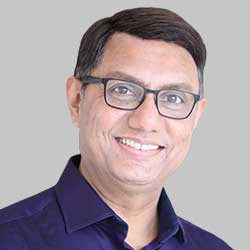 Sushobhan Dasgupta
Sushobhan Dasgupta
Vice Chairman & Global President,
Shalby Limited
With all the key strategies in place, Shalby is well poised to deliver double-digit growth in the hospital business with sustainable profitability, deepen, and increase our footprints by adding orthopedic units under SOCE franchise vertical and growing implant business in the existing markets, and entering new territories in this fiscal year. All this, in turn, will drive to create sustainable value for all stakeholders at Shalby.
Knee and hip implants manufacturing in the US. Shalby Advanced Technologies is looking to corner 15 percent of the USD 18-billion hip-and-knee market in the US and another USD 12 billion worth of market outside of the US.
Fortis Healthcare Limited
The financial highlights of consolidated financial results announced by Fortis Healthcare Limited for Q1 FY24 revealed:
- Consolidated revenues for Q1 FY24 at ₹1657 crore versus ₹1488 crore in Q1 FY23, a growth of 11.4 percent;
- Consolidated operating EBITDA at ₹273 crore versus ₹251 crore, a growth of 8.7 percent;
- PBT prior to exceptional items at ₹169 crore versus ₹176 crore; and
- PAT prior to exceptional items at ₹122 crore versus ₹134 crore.
Hospital business
- Q1 FY24 revenues were at ₹1354.1 crore versus ₹1192.4 crore in Q1 FY23 and ₹1350.5 crore in Q4 FY22. Operating margins stood at 15.2 percent for the quarter versus 16.2 percent in Q1 FY23 impacted in part due to a lower occupancy and a less than favorable payer mix;
- Occupancy was down to 64 percent in Q1 FY24 from 65 percent in Q1 FY23.
ARPOB witnessed a growth of 12.1 percent reaching ₹2.19 drore (₹60,076 per day) for Q1 FY24 from ₹1.96 crore (₹53,589 per day) in Q1 FY23.
|
Fortis Healthcare Limited* |
|||
| ₹ crore | Q1 FY24 | Q1 FY23 | Q4 FY23 |
| Revenue from operations | 1,657.41 | 1,487.85 | 1,642.70 |
| PAT | 122.5 | 134.3 | 127.8 |
| EBITDA | 272.9 | 251.1 | 270.7 |
| EPS (₹) | 1.48 | 1.62 | 1.76 |
|
* includes Agilus Diagnostics Limited |
|||
Diagnostics business
- In Q1 FY24, the business achieved gross revenues of ₹342.7 crore versus ₹332.6 crore in Q1 FY23.
- Operating EBITDA for the quarter stood at ₹66.4 crore versus ₹57.8 crore in Q1 FY23 and ₹49.5 crore in Q4 FY23.
- EBITDA margins for Q1 FY24 stood at 19.4 percent versus 17.4 percent in Q1 FY23 led by a non-Covid revenue growth of 9 percent.
- Net revenues (net of inter-company elimination) was at ₹303.3 crore in Q1 FY24 versus ₹295.5 crore in Q1 FY23.
- Net debt to EBITDA was at 0.35x versus 0.54x (basis annualized EBITDA of Q1 FY24 and Q1 FY23, respectively).
- Net debt was at ₹393 crore as of June 30, 2023 versus ₹340 crore as of March 31, 2023.
Expansion plans
On the hospital side, portfolio rationalization strategy gained momentum with the divestment of loss-making Arcot Road facility in Chennai in July 2023 for ₹152 crore. For FY23, the Arcot facility had a revenue of ₹51 crore and an EBITDA loss of ₹36 crore.
The company acquired a 350-bedded hospital in Manesar, Gurugram, for ₹225 crore. Investments in bed expansion and medical equipment are on track with the latter seeing the commissioning of a Da Vinci Robotic system at Fortis Noida in the quarter.
The company is on course for a planned addition of close to 1400 beds in coming 2 to 3 years, mainly in the NCR region, in some of its key facilities like Mulund, FMRI, Noida, Shalimar Bagh and a few more. Approvals have been received for an 80-bed hospital in Anandapur, Kolkata. Expansion is planned at Mohali, at Mulund with expansion program completed last quarter occupancy certificate is awaited, and the acquisition of a 350- bedded hospital in Manesar, Gurugram, for a consideration of ₹225 crore.
Its international business is going up and contributing around 9 percent of total revenue.
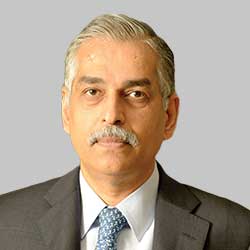 Ashutosh Raghuvanshi
Ashutosh Raghuvanshi
MD and CEO,
Fortis Healthcare Limited
We have witnessed a steady start in Q1 FY24 for both the hospitals and diagnostics business. Our hospital business revenues grew 13.6 percent to ₹1354 crore while operating EBITDA was at ₹206.4 crorre, reflecting a margin of 15.2 percent versus 16.2 percent in Q1 FY23. This was in part due to a lower occupancy and a comparatively less favorable payer mix, both of which we expect should improve going forward. Our investments in bed expansion and medical equipment are on track with the latter seeing the commissioning of a Da Vinci Xi Robotic system at Fortis Noida. International patient revenues grew 29 percent YoY at ₹115 crore and similar to the trailing quarter. On the M&A front, we signed definitive agreements to acquire a 350-bedded facility in Manesar, Gurugram, which complements well with our FMRI flagship facility. Given our healthy balance sheet, we would continue to pursue and evaluate opportunities for inorganic growth in our key geographic clusters. Further, the divestment of our Arcot Road facility in July 2023 would also help improve our hospital margins. Our diagnostics business, now known as Agilus Diagnostics Limited, has witnessed a 9-percent growth in non-Covid business revenues and has added approximately 165 customer touch points in the quarter. Operating margins of Agilus have expanded to 19.4 percent versus 17.4 percent in the corresponding previous period. Going forward, we do expect a progressively improving performance through the rest of FY24.
A subsidiary of Fortis Healthcare Limited, for its diagnostics business, now known as Agilus Diagnostics Limited, the group is proposing an initial public offer of its equity shares in the near future.
Global Health Limited (Medanta)
Q1 FY24 performance. Both matured and developing hospitals continue to deliver year on year and sequential growth.
Consolidated total income of ₹794.5 crore, grew by 26.8 percent YoY and 8.6 percent on QoQ basis. The growth was driven by a combination of factors including higher patient volumes, increase in bed occupied days and improvement in realization. EBITDA was ₹199.3 crore, growth of 40.7 percent YoY. EBITDA margins improved to 25.1 percent compared to 22.6 percent in Q1 FY23.PAT was ₹102 crore, growth of 73.7 percent. PAT margins remained stable at 12.8 percent.
|
Medanta (Global Health Limited) |
|||
| ₹ crore | Q1 FY24 | Q1 FY23 | Q4 FY23 |
| Total income | 794.50 | 626.54 | 731.83 |
| PAT | 102.01 | 58.71 | 101.07 |
| EBITDA | 199.34 | 141.6 | 191.51 |
| EPS (₹) | 3.80 | 2.32 | 3.77 |
During the quarter, 28 new beds were added at Patna. Occupied bed days increased by 16.2 percent YoY, with occupancy of 58.1 percent on increased census bed capacity. In-patients count increased by 19.4 percent YoY; Out-patients count increased by 17.5 percent YoY in Q1 FY24. ARPOB grew by 7.1 percent to ₹63,148 in Q1 FY24 driven by increase in tariffs at Gurgaon unit and increase in complex work at Lucknow and scale up at Patna.
Developing hospitals revenue share increased from 23.4 percent in Q1 FY23 to 28.9 percent in Q1 FY24 amounting to ₹229.7 crore. Developing hospital EBITDA share increased from 22.6 percent in Q1 FY23 to 31.4 percent in Q1 FY24 amounting to ₹72 crore.
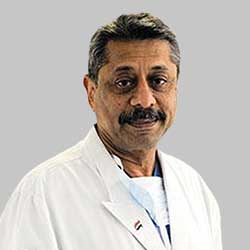 Naresh Trehan
Naresh Trehan
Chairman And Managing Director,
Global Health Limited (Medanta)
Our performance in the Q1 FY24 is on the back of delivering the highest quality of medical care with highest ethics and Medanta continues to replicate this model as we go across other parts of the geography. In the network hospitals, we have five hospitals and the sixth one, that is Noida, is on its way and hopefully in the next 18 months or so, we will be functional there too. Furthermore, most of you already know the fact that we have announced the partnership between Medanta and DLF in developing a 400-bed hospital in GK1 in Delhi. For a long period, there has been a huge demand because being aware of Medanta’s ethical and quality practices, people in Delhi have been actually requesting, demanding that we develop an institution over there also.
During the quarter, International Patients Revenue increased by 45 percent to ₹47.7 crore, driven by increased volumes and realization. In-house OPD pharmacy business continues to register strong growth. Revenue increased by 43 percent from ₹18.6 crore in Q1 FY23 to ₹26.6 crore in Q1 FY24.
First quarter of FY24 concluded on a strong note with the highest ever quarterly Total Income of ₹794.5 crore, registering a growth of 26.8 percent year on year. The company continues to deliver strong year-on-year and sequential growth driven by higher patient volumes and improvements in realization.
Both the matured and developing hospitals continue to deliver year-on-year and sequential growth. Consolidated total income was ₹794.5 crore, which is a growth of 26.8 percent year-on-year and 8.6 percent on a quarter-on-quarter basis, driven by higher patient footfalls and improved realizations in this quarter. EBITDA of the quarter was at ₹199.3 crore, registering a growth of 40.7 percent year-on-year, with EBITDA margins improving from 22.6 percent in the first quarter of FY23 to 25.1 percent in the first quarter of FY24. Profit after tax was at ₹102 crore, a growth of 73.7 percent year-on-year. During the quarter, 28 new dedicated ICU beds in Patna were added, taking total bed capacity at the group level to 2,725.
In terms of operational performance, average occupied bed days for the quarter increased by 16.2 percent year-on-year, representing an occupancy of 58.1 percent on increased bed capacity. ARPOB grew by 7.1 percent to ₹63,148 in Q1 FY24, driven in part by increased tariffs at the Gurgaon unit, as well as the increased complexity of work in Lucknow and the scale up of our facility at Patna. Inpatient count increased by 19.4 percent year-on-year to 37,000+. Outpatient count increased by 17.5 percent year-on-year to ~6.6 lakhs in the first quarter of FY24. In terms of developing hospitals, that is Lucknow and Patna, the total income increased from ₹146.8 crore to ₹229.7 crore, a growth of 56.5 percent year-on-year. EBITDA of the developing hospitals increased from ₹33.1 crore in Q1 FY23 to ₹72 crore in Q1 FY24, representing a growth of 117.6 percent year-on-year. Developing hospital revenue share also increased from 23.4 percent in Q1 FY23 to 28.9 percent in Q1 FY24, while EBITDA share increased from 22.6 percent in Q1 FY23 to 31.4 percent in Q1 FY24. During the quarter, international patients’ revenue also increased by 45 percent to ₹47.7 crore driven by increased volumes and realizations. In-house outpatient pharmacy business revenue increased by 43 percent from ₹18.6 crore in Q1 FY23 to ₹26.6 crore in Q1 FY24.
Expansion plans. The group has entered into an understanding with DLF to form a company to launch a 400-bed multi-super specialty hospital to provide highest quality of health care in the heart of Delhi in Greater Kailash 1. Both Medanta and DLF will own 50-50 equity in the new company. DLF will be the strategic investor and Medanta will run the hospital and have operational control. Medanta Gurgaon, Noida and Delhi facilities collectively will integrate in a seamless manner to be able to link 1,391 bed flagship hospital in Gurgaon, 550 bmered hospital in Noida and the new 400-bed hospital in Delhi.
Metropolis Healthcare Limited
The unaudited consolidated financial results announced by Metropolis Healthcare Ltd. for Q1 FY24 revealed:
Overall revenue decreased by 1 percent, primarily on account of a large B2C contract imposed by the government impacting the total revenue. Excluding this, revenue for the core business, B2C, B2B grew by 12 percent. Going forward, management is confident of scaling up revenue for the coming quarters, which will have a positive impact on margins with high operating leverage play in the business.
- Core business revenue growth stood at 12 percent YoY with 9 percent volume growth and 3 percent RPT growth;
- Core business patient stood at 2.7 mn with a growth of 9 percent YoY;
- EBIDTA before network expansion stood 25.3 percent;
- Premium Wellness segment’s revenue grew by 27 percent and volumes grew by 38 percent;
- Contribution of premium Wellness stood at 15 percent; and
- B2C revenue growth in Mumbai stood at 15 percent on account of our strong brand presence and dense network.
Expansion plans
Lab expansion. In the last 24 months, the company has started 36 labs, of which 21 are in new geographies.
- Focused on B2B business in the new geographies where labs are opened; and
- Expect to achieve scale in B2B business in 2–3 years of lab opening, simultaneously foraying in B2C business with opening of franchise centers.
Service network expansion. In the last 24 months, the company has added 1420 centers.
- Increasing marketing activities to create a strong B2C connect focused on specialized testing.
Total revenue from labs started in last 24 months stood at ₹46 crore in FY23. And for Q1 FY24, the revenue for labs started in last 27 months stood at ₹16 crore.
|
Metropolis Healthcare Limited |
|||
| ₹ crore | Q1 FY24 | Q1 FY23 | Q4 FY23 |
| Revenue from operations | 277.1 | 279.9 | 282.55 |
| PAT | 29 | 33.6 | 33.49 |
| EBITDA | 64.5 | 69.8 | 71.51 |
| EPS (₹) | 5.62 | 6.53 | 6.51 |
The addressable market is expected to increase to ₹21,000 crore by FY26, with Illness increasing from ₹11,000 crore in FY23 to ₹14,000 crore in FY26 and Wellness increasing from ₹14,000 crore in FY23 to ₹7000 crore in FY26. In terms of segment, in FY23, the addressable market was ₹101,000 crore, comprising radiology – ₹43,000 crore and pathology ₹58,000 crore. By FY26 it is expected to be radiology – ₹58,000 crore and pathology ₹76,000 crore, an overall 10-percent increase.
Metropolis Healthcare projects are expected to grow faster than industry growth, additional levers for accelerated industry growth being consumer shift from unorganized to organized chains, stringent regulatory environment, and penetration of insurance in diagnostics industry.
 Ameera Shah
Ameera Shah
Promoter and Managing Director,
Metropolis Healthcare Ltd.
In Q1 FY24, the core business revenues grew by 12 percent YoY, reflecting a consistent trend of double-digit growth over the past five quarters for its core revenues. Total revenues for Q1 FY24 were down by 1 percent primarily on account of a large B2G contract insourced by the government and a high base of Covid and allied tests. The company remains optimistic about scaling up revenue in the upcoming quarters, indicating positive operating leverage play.
B2C revenue grew by 13 percent YoY with Mumbai revenues for B2C growing by over 15 percent. Metropolis has witnessed growth across test mix in B2C markets with Specialized and Wellness segments growing by 15 percent and 19 percent respectively on a YoY basis.
Going forward, company focuses on network expansion, increasing doctor connects, growing Specialized and Wellness segments and upgrading IT infrastructure for enhancing the consumer experience. We firmly believe that Metropolis is in an advantageous position to achieve a higher market share across various geographies and surpass industry growth.
Overall revenue decreased by 1 percent, primarily on account of a large B2C contract imposed by the government impacting the total revenue. Excluding this, revenue for the core business, B2C, B2B grew by 12percent. Going forward, management is confident of scaling up revenue for the coming quarters, which will have a positive impact on margins with high operating leverage play in the business.
Dr. Lal PathLabs Limited
The consolidated revenue for Dr Lal Pathlabs in Q1 FY24 increased 7.6 percent to ₹541 crore from ₹502.7 crore, YoY. At the operating level, earnings before interest, taxes, depreciation, and amortization (EBITDA) during the first quarter of FY24 rose 24.4 percent to ₹146.2 crore from ₹117.5 crore in the year-ago quarter.
|
Dr Lal PathLabs Limited |
|||
| ₹ crore | Q1 FY24 | Q1 FY23 | Q4 FY23 |
| Revenue | 541.0 | 503.0 | 505.2 |
| PAT | 83.6 | 58.2 | 56.9 |
| EBITDA | 146.0 | 118.0 | 129.8 |
| EPS (₹) | 9.9 | 7.0 | 6.84 |
Consolidated net profit was ₹83.6 crore for Q1 FY24 registering a growth of 43.6 percent YoY. The net profit of the company in the corresponding quarter of previous year was ₹58.2 crore.
The company’s EBITDA margin improved by 360 basis points (bps) to 27 percent from 23.4 percent, YoY.
Other highlights
- Non-Covid revenue increased by 9.7 percent in Q1 FY24;
- Normalized EBITDA margin (after adjustment for stock-based compensation and CSR) for Q1 FY24 is 28.4 percent; and
- PAT margin for Q1 FY24 is 15.4 percent.
Expansion plans
- Drive higher volumes in high-potential markets of Western and Southern India;
- Follow cluster city approach to steer growth in key pockets;
- Enhance presence in Maharashtra, especially Mumbai, through Suburban Diagnostics; and
- Launched reference labs in Bengaluru and Mumbai.
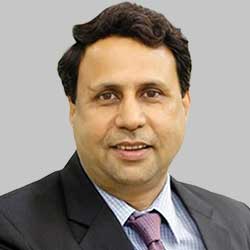 Om Manchanda
Om Manchanda
Managing Director,
Dr. Lal Pathlabs Limited
Over the next few years, we expect a rapid shift of market share from unorganized to organized, driven by changing industry dynamics and certain intrinsic benefits available to large organized players. Our omnichannel focus is further accelerating this shift as we seamlessly transport samples and deliver reports conveniently with best-in-class patient experience. Our digital investments have grown manifold in the past few years largely directed toward enhancing the IT infrastructure, including the implementation of advanced technologies to drive higher volumes. These efforts aim to elevate the patient experience and provide tailored solutions to meet customized needs. We continue to focus on highly specialized segments of pathology testing. Our approach has been to focus on these segments through Centre of Excellence (CoE). Dr. Lal PathLabs has strengthened its reputation as a reliable and patient-centric company, and we are committed to leaving our imprint and continuing the growth trajectory.
|
Thyrocare Technologies Limited |
|||
| ₹ crore | Q1 FY24 | Q1 FY23 | Q4 FY23 |
| Total income | 124.00 | 128.79 | 139.58 |
| PAT | 17.25 | 21.73 | 12.49 |
| EBITDA | 35.49 | 36.92 | 28.39 |
| EPS (₹) | 3.26 | 4.11 | 2.36 |
To sum up, while Indian hospitals and labs are offering world class robotics, high-end oncology, cardiac sciences, orthopedics, genome testing, etc., the expansion remains concentrated in larger cities and towns, that is close to their existing network that has enough number of patients that have propensity to pay the high prices needed to sustain these facilities and is where the increasing international patients prefer to be treated.














